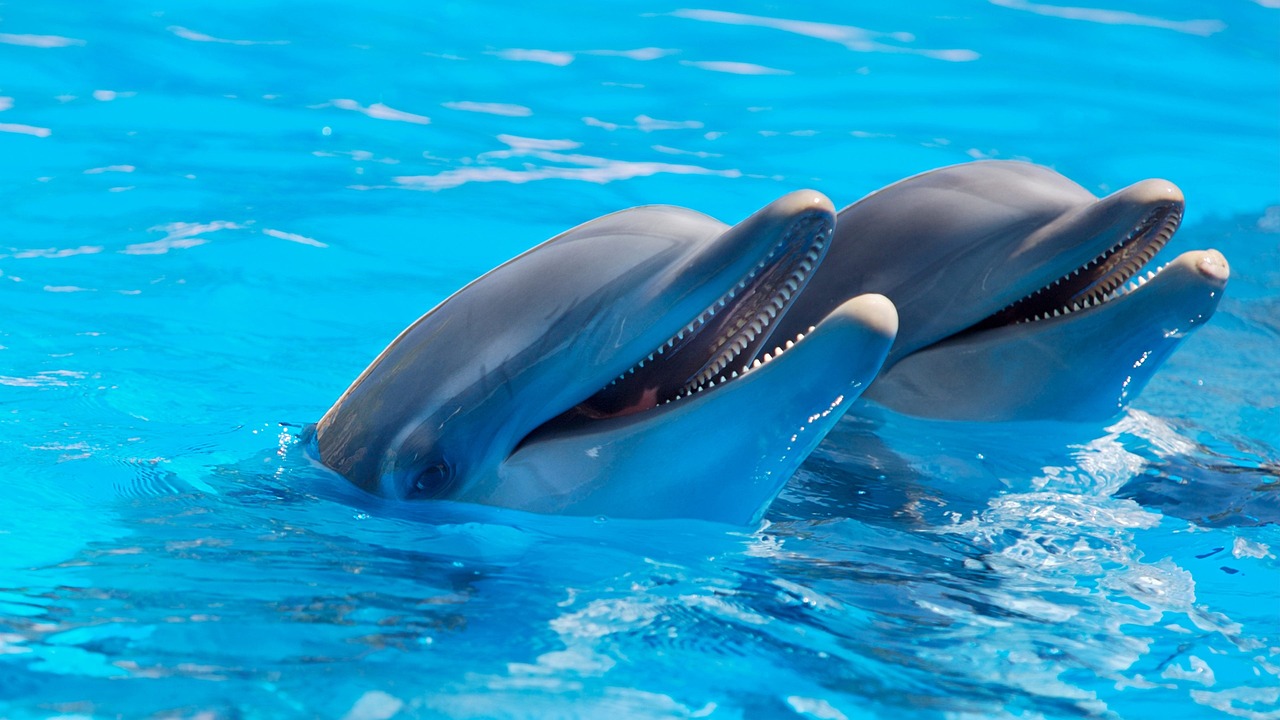- Dolphins are highly intelligent marine mammals known for their playful behavior and social interactions.
- They belong to the cetacean family and are closely related to whales and porpoises.
- Dolphins are found in oceans and seas around the world, ranging from warm tropical waters to colder temperate regions.
- There are approximately 40 different species of dolphins, with the bottlenose dolphin being one of the most well-known.
- Dolphins have a streamlined body shape and can swim at speeds of up to 20 miles per hour.
- They are excellent swimmers and can leap out of the water, perform acrobatic flips, and ride waves.
- Dolphins are highly social animals and often live in groups called pods, which can consist of a few individuals to several hundred.
- They communicate with each other using a variety of clicks, whistles, and body movements.
- Dolphins have a complex social structure and exhibit cooperative behaviors such as hunting and protecting one another.
- They are known to be curious and have been observed interacting with humans, boats, and other marine animals.
- Dolphins have excellent eyesight both in and out of the water, allowing them to navigate and locate prey.
- They also have a highly developed sense of hearing and use echolocation to detect objects and navigate their environment.
- Dolphins have a diverse diet that includes fish, squid, and other marine creatures depending on their habitat.
- They are skilled hunters and use various hunting techniques, such as herding fish into tight groups or stunning prey with their tails.
- Dolphins have been observed using tools, such as sponges, to protect their snouts while foraging for food in sandy areas.
- They are known for their playful behavior, often riding waves, leaping, and engaging in synchronized swimming.
- Dolphins have been known to exhibit altruistic behavior, coming to the aid of injured or distressed individuals, including humans.
- Some dolphin species migrate seasonally in search of food or to give birth in warmer waters.
- Dolphins have a relatively long lifespan, with some species living up to 50 years or more in the wild.
- They are highly adaptable and can thrive in various marine habitats, including coastal areas, open oceans, and estuaries.
- Dolphins have a specialized respiratory system that allows them to breathe air at the water’s surface.
- They are conscious breathers, meaning they have to consciously come to the water’s surface to breathe.
- Dolphins can hold their breath for several minutes and can make rapid dives to great depths.
- They have a layer of blubber that helps insulate and regulate their body temperature in colder waters.
- Dolphins engage in courtship and mating behaviors, and females give birth to live young.
- Newborn dolphins, called calves, are typically born tail-first to prevent drowning during the birth process.
- Calves are nursed by their mothers and stay close to them for several months before becoming more independent.
- Dolphins have been observed displaying affectionate behaviors, such as rubbing against each other or touching fins.
- They have a unique and complex vocal repertoire, with individual dolphins having their own signature whistle.
- Dolphins are highly trainable and have been used in various research studies, as well as in marine mammal shows and interactions.
- They have been known to display problem-solving abilities and can learn and perform a wide range of tasks.
- Dolphins are protected in many countries and are considered a symbol of conservation and environmental awareness.
- They face threats from pollution, habitat loss, fishing nets, and human activities that disrupt their natural behavior.
- Dolphins have been known to assist fishermen by driving fish towards their nets, benefiting both the dolphins and the fishermen.
- Some species of dolphins, such as the killer whale (orca), are apex predators and are at the top of the marine food chain.
- Dolphins are known to exhibit playful behaviors even in captivity, which has led to the development of dolphin-assisted therapy programs.
- Dolphins have been studied for their remarkable memory and cognitive abilities, including their ability to recognize themselves in mirrors.
- They have been observed using their tails to create mud rings on the seabed to disorient and capture fish.
- Dolphins have been known to exhibit cultural behaviors, passing on knowledge and traditions within their social groups.
- They are protected by various international conservation organizations, such as the International Union for Conservation of Nature (IUCN).
- Dolphins have a close relationship with humans, appearing in folklore, mythology, and art throughout history.
- They are a popular attraction for tourists, who often participate in dolphin-watching tours or swim with dolphins experiences.
- Dolphins have been the subject of scientific research, contributing to our understanding of marine ecosystems and animal behavior.
- They have been observed participating in cooperative hunting with other marine species, such as birds and sharks.
- Dolphins have a complex brain structure and are known for their advanced problem-solving and learning abilities.
- They have been trained to perform tasks such as detecting underwater mines or assisting with ocean conservation research.
- Dolphins have been found to exhibit individual personalities, with some being more social or outgoing than others.
- They are protected by various national and international laws to ensure their conservation and welfare.
- Dolphins play a vital role in marine ecosystems, helping to maintain the balance of marine populations and contributing to biodiversity.
- Dolphins are fascinating creatures that continue to captivate researchers, conservationists, and the public with their intelligence, social behavior, and graceful presence in the world’s oceans.
Facebook Comments


































